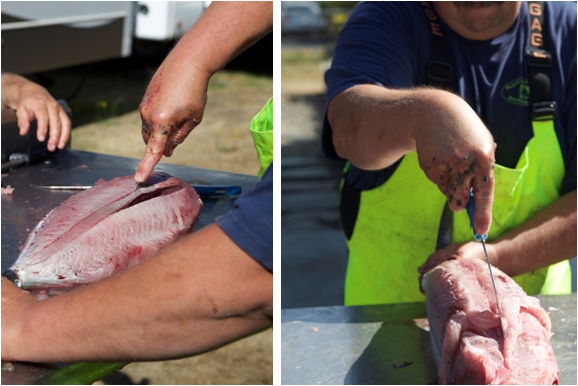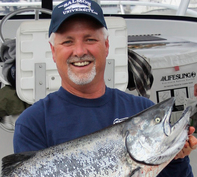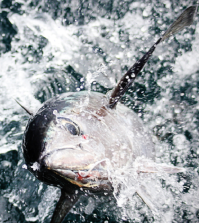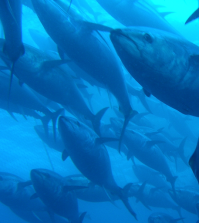Tuna Fishing Washington (Part 4)
To read part one of this series, click here. For the complete “Tuna Fishing Washington” series, visit our tuna fishing page.
We’ve previously discussed how to catch tuna. Now that you’ve landed one, what do you do?
Caring for and Cleaning your catch: Tuna are warm when you catch them and it is important to bleed them immediately and cool them quickly. As soon as you remove the hook you should either cut the gills or puncture the fish directly behind the long pectoral fin on each side. These fish bleed a lot and you should place them in a bleed bucket on the deck near a scupper.
After the fish are bled and cooled down, and when we have some time to catch up and clean up, I like to remove the head and gut sack. Make a two-inch cut, just in front of the vent toward the head. Reach in with your finger and pull the vent tube out of the body, cut it, then make a cut around the body just behind the pectoral fin. Lift or rotate the head to break the back bone and pull. If you have done this correctly the head and gut sack will come off together. Throw it overboard. (Unlike other fish in Washington tuna can be cleaned at sea.) At this point you will want to put your fish in a cooler, fish box, or kill bag, and cover with ice. This is the most important step to ensure your tuna stay fresh.
How to clean an Albacore:

After you’ve removed the head and gut sack, roll the tuna on its back and start a cut from the tail forward ensuring that you remove the belly.

Roll the tuna over and make a forward cut ensuring that you remove all the fins. Do not cut too deep because this is the prime meat on the fish.

Lay the tuna on its side and grab the edge for the skin and pull it toward you. If the tuna is cold this will be easy.

Roll the tuna over and repeat on the other side.

With the tuna on its side you will see a lateral blood line, with a sharp knife, cut down each side of it. Roll the tuna over and repeat the cut.

Use your fingers at this point and run them from head to tail working toward you and the loin will come off. You may need to use a knife to get it completely free. There are four loins per tuna so you need to remove them all.

Here is where having help is good. After removing the loins you need to trim whatever blood line is left on the loin. This is very important because it will have a very negative effect on the taste of the tuna if it is left on.
Final Thoughts: Tuna fishing, in my opinion, is the most intense fishery we have in this state. It is probably the most fun, too. Many people have told me that once you go tuna fishing you will be hooked for life. So be prepared. Have Fun, be safe, and let’s go tuna fishing in Westport!








